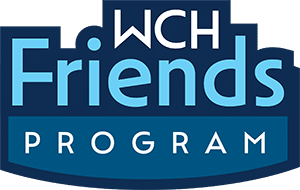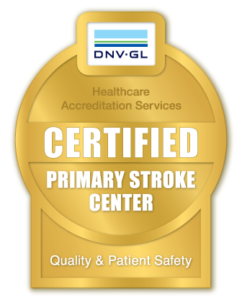
Primary Stroke Center

Stroke Recovery Center in Wooster, Ohio
Certified Stroke Care Close to Home
Wooster Community Hospital (WCH) is proud to be certified as a Primary Stroke Center by DNV-GL Healthcare, a recognition that reflects our commitment to delivering high-quality, evidence-based stroke care. This certification ensures that we meet rigorous national standards to support better outcomes for stroke patients, from diagnosis through recovery.
Located within our full-service, acute-care facility in Wooster, Ohio, the Primary Stroke Center at WCH offers advanced resources and expert care for a wide range of stroke-related conditions, including:
- Prompt diagnosis and treatment of acute ischemic strokes (caused by a blockage of blood flow to the brain)
- Administration of thrombolytics (clot-busting medications) for eligible patients to restore blood flow and limit brain damage
- 24/7 teleneurology consultations, in partnership with The Ohio State University (OSU), ensuring immediate access to neurologists
- Advanced diagnostic testing to accurately identify and assess stroke type and severity
While our team is equipped to treat most ischemic strokes, certain cases require higher levels of care:
- For hemorrhagic strokes (brain bleeds), we provide rapid stabilization before transferring patients to a Comprehensive Stroke Center with 24/7 neurosurgical capabilities.
- Patients experiencing large vessel occlusions who may benefit from surgical procedures like thrombectomy are also transferred to a comprehensive facility with specialized neurosurgery teams
In every case, our stroke team works quickly and efficiently to ensure the right care, at the right time, in the right place.
When seconds count, trust WCH’s Primary Stroke Center to deliver expert, lifesaving stroke care—right here in your community.
Wooster Community Hospital Primary Stroke Center has received the American Heart Association’s Get with The Guidelines®-Stroke Quality Achievement Award Gold Plus with Target: Stroke Honor Roll Elite, and Type 2 Diabetes Honor Roll for our commitment to ensuring stroke patients receive the most appropriate treatment according to nationally recognized, research-based guidelines.
WCH is also equipped to facilitate patient transfers for additional treatment if needed. DNV-GL’s stroke certification program incorporates portions of the National Integrated Accreditation for Healthcare Organizations (NIAHO) hospital accreditation standards, guidelines of the Brain Attack Coalition, as well as recommendations from the American Stroke Association.
BE FAST to recognize the warning signs of a stroke:
- B: Balance – Is there a sudden loss of balance or coordination?
- E: Eyes – Is there sudden blurred or double vision or sudden, persistent vision trouble?
- F: Face drooping. During a stroke, one side of the face may droop or feel numb.
- A: Arm weakness. Stroke can cause weakness or numbness in one arm.
- S: Speech difficulty. Someone experiencing a stroke may slur their speech or be unable to speak.
- T: Time to call 911. If a friend or loved one exhibits any of these symptoms, even if the symptoms go away, call 911 immediately. Be sure to note the time when the first symptoms appeared. Emergency responders will want to know.
Other symptoms may include:
- Numbness or weakness of the face, arm, or leg, especially on one side of the body
- Blurred vision or temporary vision loss in one or both eyes
- Difficulty walking, dizziness, loss of balance or coordination
- Sudden confusion or inability to understand
- Severe headache that occurs suddenly, with no known cause
We are proud to announce that the WCH Primary Stroke Center has partnered with the OSU Wexner Medical Center, Neurological Division to provide the telestroke program to our community.
Our telemedicine program for stroke includes advanced InTouch Health™ robots in the emergency department at Wooster Community Hospital. Immediate care is crucial to treat stroke patients. WCH’s robot allows stroke neurologists to remotely perform live, real-time audiovisual consultations with the patient and emergency medicine team to speed the delivery of clot-busting drugs crucial to halt and reverse stroke damage. Consider the robot a portal through which a stroke specialist anywhere can be virtually present at a moment's notice.
A stroke specialist is connected through live video to access a patient visually and work in conjunction with the stroke team to quickly begin the care the patient needs. Through the robot’s monitor, patients and families can also see, hear and communicate with the specialist.

 Cancer Care
Cancer Care
 Rehabilitation
Rehabilitation
 Women's Health
Women's Health
 Behavioral Health
Behavioral Health
 Cardiovascular Care
Cardiovascular Care
 Surgery
Surgery






